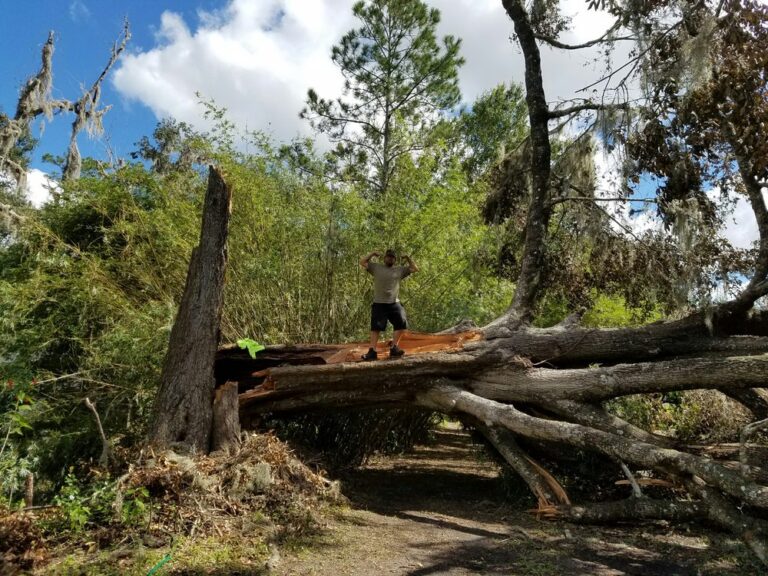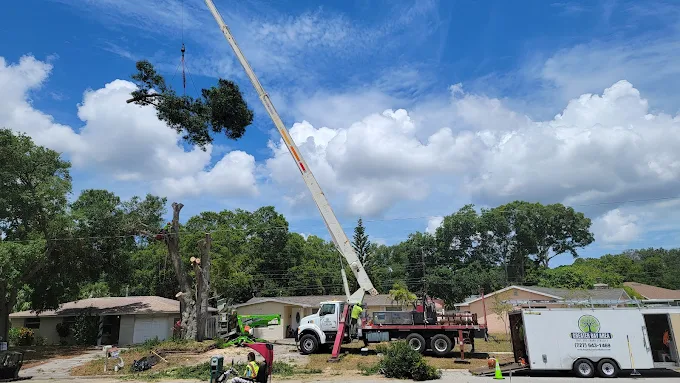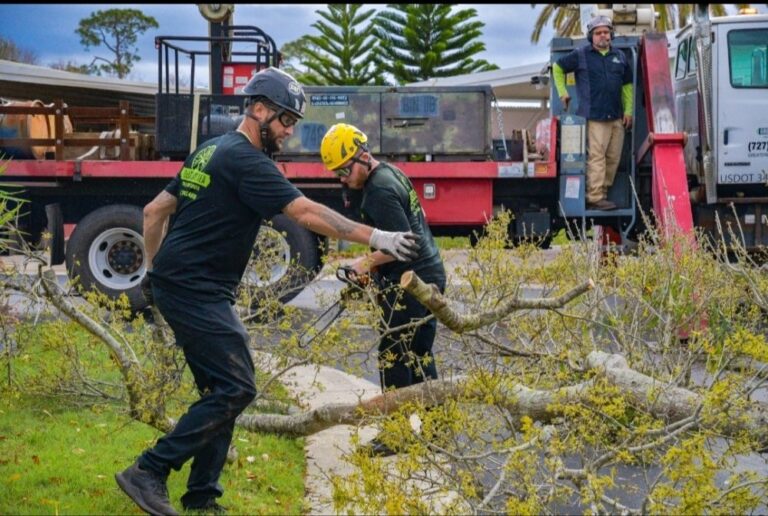Why is Florida so beautiful? A big reason is its lush trees and plants. What happens if you want to remove some of that greenery—maybe to build a pool or take out a tree that isn’t healthy? When you’re considering cutting down a tree on your property in Florida, it’s important to know the laws that apply. Where can you find information about these rules? Let’s break down what you need to know about tree removal regulations in Florida.

The Legal Lowdown: Can You Just Cut?
First of all, can you cut down any tree in Florida without a permit? It depends, but the short answer is… (Doesn’t that always happen with legal issues?)
Florida Statute Chapter 163.045 says that property owners can cut down trees without a permit if the tree is a direct threat to safety or property. But don’t start your chainsaws yet! There is a catch. You will need proof from a certified arborist or a Florida-licensed landscape architect that the tree poses a danger.
The story is different for trees that aren’t dangerous. Before you start swinging that axe, check with your local laws, which may require permits or at least a heads-up to the authorities.
The Most Important Plants Are Protected trees.
Because Florida has a diverse range of ecosystems, some trees require additional care. There is no statewide list of protected trees, but many cities and counties have their own lists of species that can’t be touched without permission.
For example, mangroves are the most famous trees in Florida, and both state and federal laws protect them. In Miami, some trees are so important that you could get a big fine for messing with them without permission. You might wish you had taken up bonsai instead.
The Florida Trinity: Oak, Palm, and Cypress
You might think that famous Florida trees, such as oaks, palms, and cypress, would have their own rules. At the state level, though, they are treated like any other tree. But don’t let that fool you into thinking it’s okay to hunt these beautiful plants.
Many local governments are concerned about these species and may have regulations in place to protect them. Check your local laws before you decide that giant oak is the best place for your new treehouse. You might find that your city loves that oak tree more than you do!

The Process for Getting a Permit: Before you cut, do the paperwork.
If a tree on your property is leaning like the Leaning Tower of Pisa and is dangerous, you might not need a permit under state law. However, it’s always best to double-check, as local rules may still be applicable.
For properties that aren’t homes, you often need a permit, and local rules can be stricter than a drill sergeant on a bad day. What did you learn? Before taking any action, always verify with your local government.
Power lines and buildings: special situations
Trees near power lines are unique in their own right. Utility companies typically have guidelines for cutting down trees in these areas. After all, no one wants their landscaping to turn into an unplanned fireworks show.
When it comes to trees near buildings, the most important thing is to ensure that removing the tree doesn’t damage nearby properties or public spaces. If you cut too much off a tree, your neighbor might not like waking up to find half of it in their living room.
Help from a pro: Trimworks Tree Service
If the legal jargon is overwhelming, don’t worry. This is where professional services, such as Trimworks Tree Service, can help. We don’t know exactly what services they offer, but many tree services are familiar with local laws and can help you get the right permits.
These pros often help with:
- Filling out permit applications
- Understanding local laws
- Assessing the health and safety of trees
- Following local laws when removing trees

When Disaster Strikes: Cutting Down Trees in an Emergency
Florida’s weather can be as unpredictable as a game of Jumanji. When storms hit and trees become hazardous immediately, many companies, such as Trimworks, offer emergency removal services. When a tree decides to make an unexpected house call, these are the tree versions of superheroes that swoop in to save the day.
The Bottom Line: Get Help and Stay Informed
Florida’s complicated laws make tree cutting difficult. With the right info and expert help, you can ensure your tree management is legal and eco-friendly.
Keep in mind:
- Always check local laws before cutting down a tree.
- Get a professional opinion on trees that might be dangerous.
- Think about how cutting down a tree will affect the environment.
- If you’re uncertain, please consider contacting the police or a professional tree service.
Following these rules will help you keep your plants healthy and ensure compliance with the law. And who knows? You might even like the complicated world of tree rules more. Just don’t hug too many trees; some of them might be protected!


















